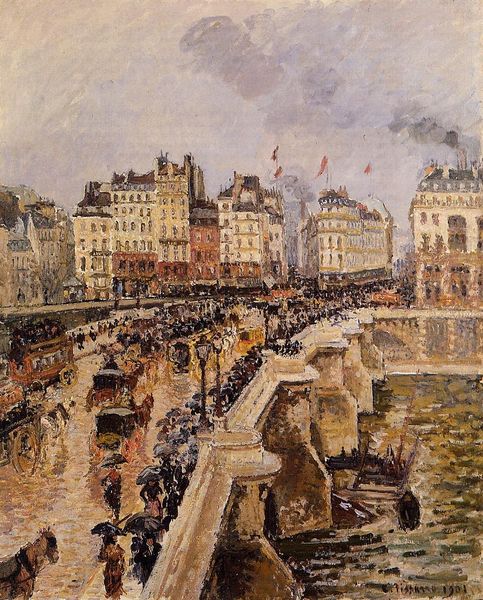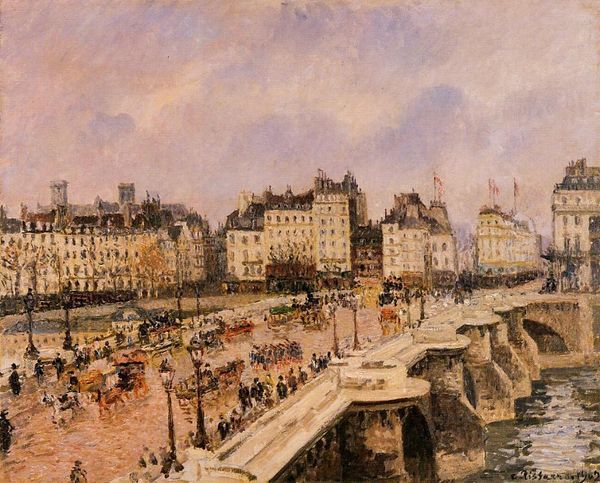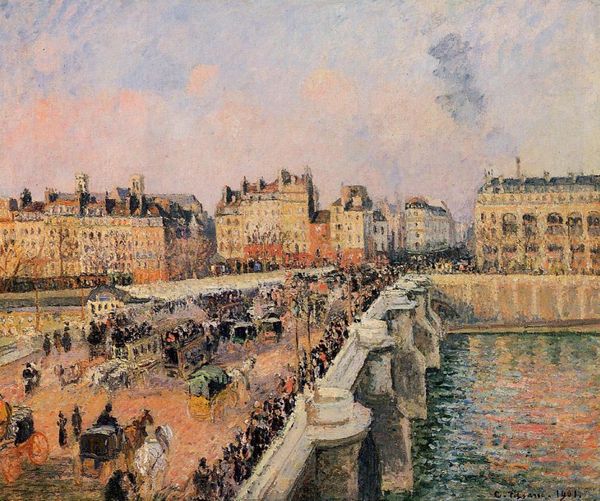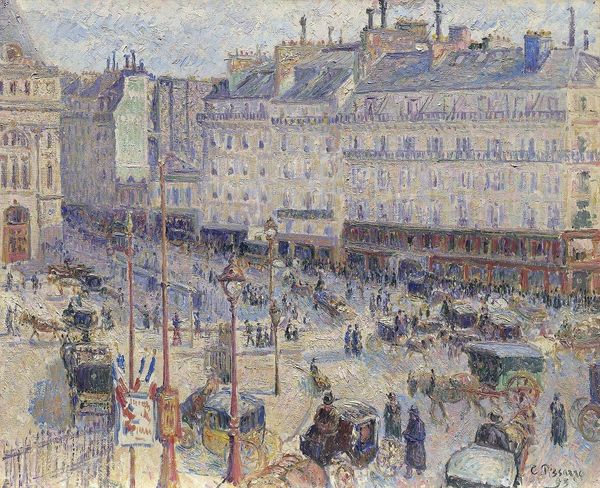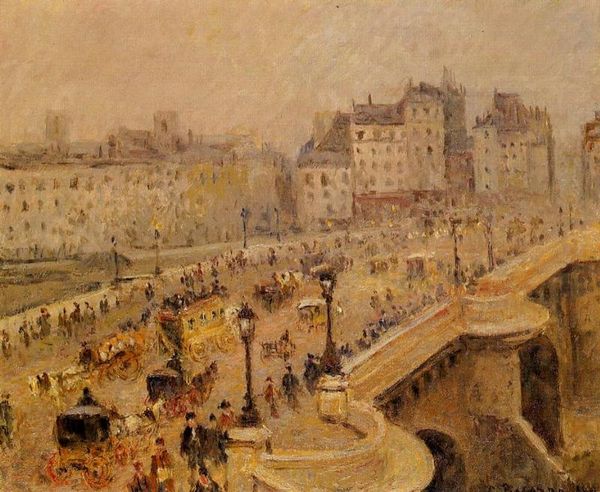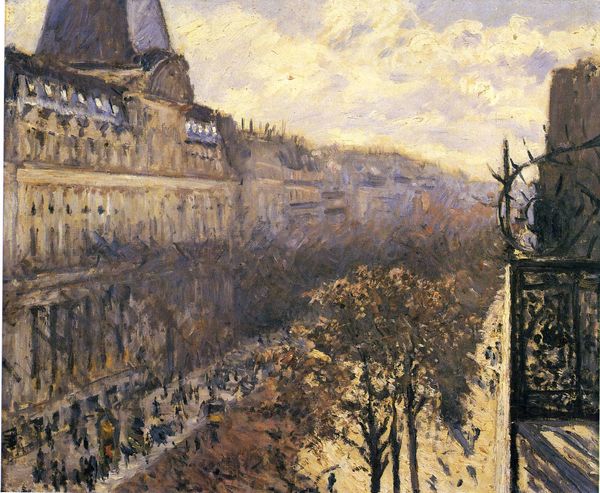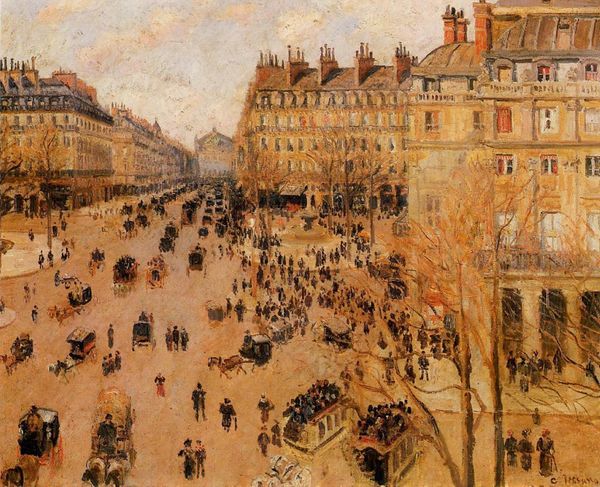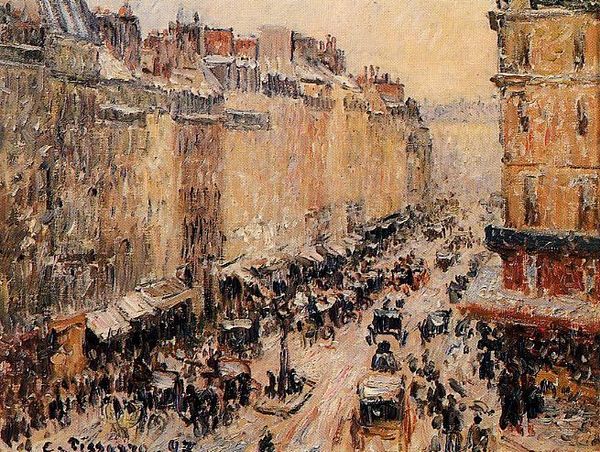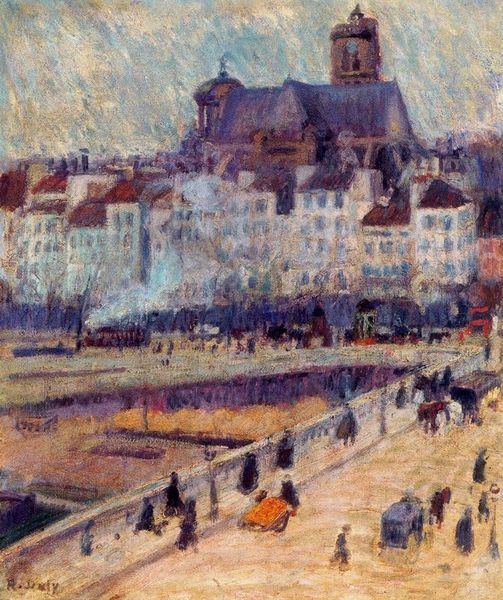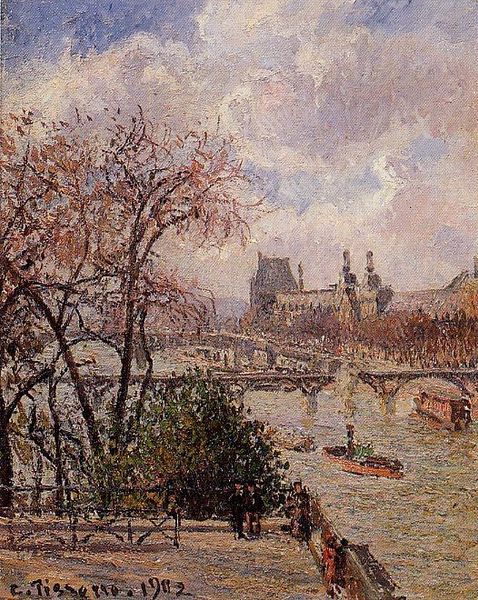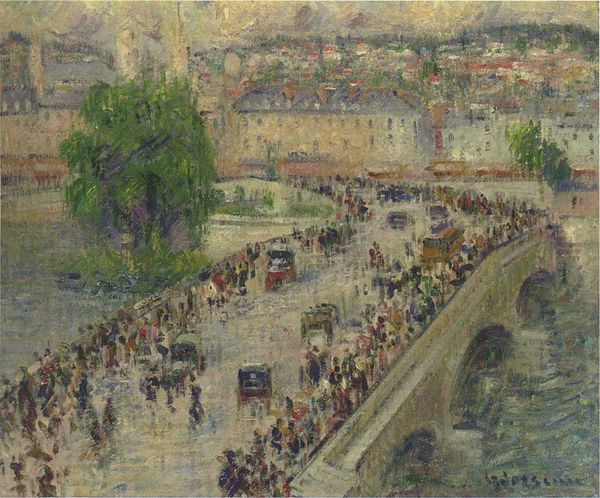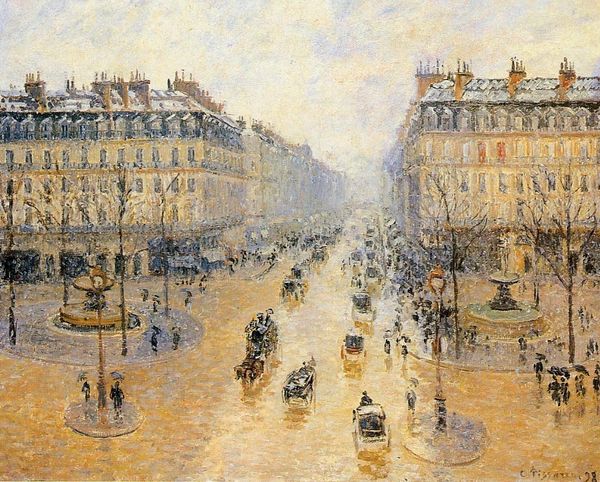
Dimensions: 46.5 x 39 cm
Copyright: Public domain
Editor: Here we have Camille Pissarro's "The Pont Neuf 2," painted in 1901. It’s an oil painting, and the way the light flickers really gives it a bustling, almost overwhelming energy. What do you see in this piece? Curator: I see a potent intersection of class and labor being represented during a rapidly modernizing Paris. Pissarro, though considered an Impressionist, consistently engaged with anarchist ideals. Observe how he captures the vibrant, almost chaotic energy of the city, but from a removed perspective. Editor: Removed? How so? Curator: Pissarro often painted from upper-story windows, offering him a panoramic view. It is a perspective that places him, and therefore the viewer, in a position of detached observation. Who does this 'gaze' benefit, and who is made visible, and in what way, through it? Think about the laborers, the working class, the sheer volume of bodies traversing the bridge – are they individualized or part of a collective mass? Editor: I guess I hadn't considered the political implications of the viewpoint itself. They do seem somewhat anonymous, more like brushstrokes contributing to the larger image of the city. Curator: Exactly. And how might this reflect Pissarro's anarchist leanings? He critiques the social stratification inherent in Haussmann's urban planning, where the boulevards, while aesthetically pleasing for the bourgeoisie, also served to control and survey the populace. He does so by denying the viewer the privilege of specific encounters, decentering the bourgeois subject, and capturing a bird's eye view where everyone is equal. Consider also the unidealized, almost gritty portrayal, disrupting typical landscape painting. Editor: So, it’s not just a pretty picture of Paris; it’s a commentary on social dynamics and power? Curator: Precisely. By understanding the social context, we can read "The Pont Neuf 2" as a subtle critique of urban life and class structures, moving beyond the purely aesthetic appreciation of Impressionism. What seemed a joyful scene of busy modern life now prompts questions about its cost, and how power is always watching from above. Editor: That gives me a lot to think about. I’ll never look at Impressionism the same way again.
Comments
No comments
Be the first to comment and join the conversation on the ultimate creative platform.
